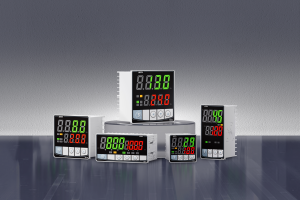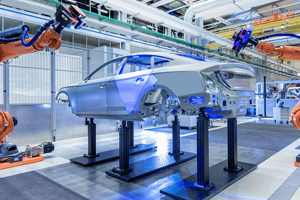How to Find (K_p), (K_i), and (K_d) in a PID Controller: A Comprehensive Guide
Learn how to find (K_p), (K_i), and (K_d) in a PID controller with our comprehensive guide. Understand the roles of Proportional, Integral, and Derivative gains, and explore various tuning methods to achieve optimal system performance.
1. Introduction
The article below will walk you through finding the parameters and explain their significance.
2. Understanding PID Parameters
The Proportional Gain of (K_p).
Proportional gain (K_p), also known as the Gain in Proportion, is a measure of the response to the error. The proportional gain ((K_p)) is used to determine the reaction of the current error. Higher (K_p), but less stable, values result in an aggressive reaction. This can quickly reduce error. In a system that controls temperature, for example, increasing the (K_p value) can make it respond more quickly to changes in temperature, but a too-high value may cause oscillations.
Integral Gain ((K_i))
Integral gain (K_i) is the sum of all past errors. The integral gain helps to eliminate residual errors in steady state that cannot be removed by the proportional terms. Too much integral action, however, can cause oscillations and overshooting. The (K_i), in a system of speed control, compensates for persistent errors to maintain the desired speed.
Derivative Gain ((K_d))
Derivative Gains ((K_d')) are a way to predict future mistakes based on rate of change. This dampening action reduces overshoot, and improves stability. Nevertheless, an excessive derivative can cause the system to be overly sensitive. In a system of position control, for example, the (K_d), helps to smooth the motion, reducing the chance that the target is overshot.
Initial Setup
Before you start tuning PID parameters make sure that all of your sensors and actuators work correctly. Set the initial value of (K_i), (K_p) and (K_d), to zero. The baseline allows you to observe how the system responds without having to take any action. Before tuning a robot arm, for example, make sure all sensors and joints are working properly.
.
3. Tuning methods
Manual tuning
The (K_i), (K_d), and (K_p) values are adjusted manually based on how the system responds. Increase the value of (K_p), until you see the oscillations. Adjust the value of (K_i), to remove steady-state errors, and then fine-tune (K_d), to improve stability and reduce overshoot. It requires patience, and an understanding of how the system behaves. In a heating system for example, increase (K_p), until temperature oscillates, add (K_i), to correct steady-state errors, and adjust (K_d), to smooth the response.
Ziegler-Nichols Method
Ziegler-Nichols is an extremely popular method of tuning that offers a systematized approach. The (K_p value should be increased until the oscillations are constant. Not the critical gain value ((K_c),) nor the oscillation time ((P_c). Calculate the PID parameters by using these values and pre-defined formulae. It is a good method, but it may not be suitable for every system. In a system that controls flow, for example, the Ziegler Nichols method can be used to determine the (K_i), (K_p), and (K_d), initial values, and fine-tuned based on system performance.
4. Useful Software
Various software and simulators are available to assist with PID tuning. You can use these tools to simulate PID settings and model your system to determine the best parameters. MATLAB and Simulink are examples. Software tools are a great way to save time while delivering more accurate results. You can, for example, use MATLAB in an industrial automation to test the response of the system to various PID settings, and then find the best parameters, without having to physically test each one.
Practical Tips
Small adjustments to PID parameters can be made and observed. Instability can be caused by large adjustments. To avoid abrupt changes in the stability of a system that controls pressure, you can make small adjustments (K_p), K_i), or K_d and monitor the response.
* Avoid common pitfalls: Setting the value of (K_i), too high can lead to excessive overshoot. A high (K_d), on the other hand, can cause the system to be too sensitive. In a system for speed control, high values of (K_i), can lead to the overshooting the desired speed. High (K_d) values can also cause instability.
You can fine-tune your system parameters to suit specific applications once you've got a stable one. A temperature control system, for example, may need different settings from a position-control system. You may need to adjust the PID parameter settings in a temperature-control system to maintain a constant temperature while minimizing oscillations and overshoot.
The conclusion of the article is:
5.Conclusion
It is important to understand the PID controller system, and its effects on each parameter. You can get the best performance and stability by following these methods. To maintain desired behavior, you must monitor and adjust the system continuously. Monitor the performance of an industrial control system and make adjustments to the PID parameters if necessary.
- What is a PID Controller? Understanding Its Components, Working, and Applications
- How to Set PID Controller Parameters: A Comprehensive Guide























